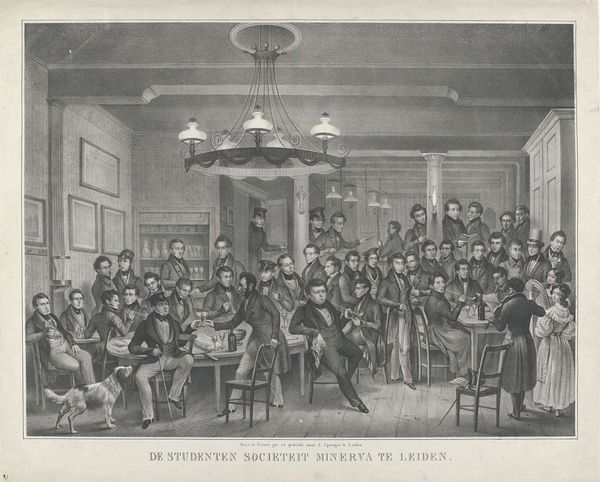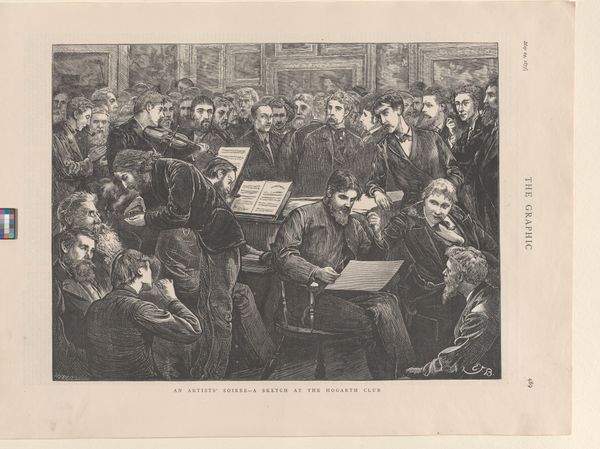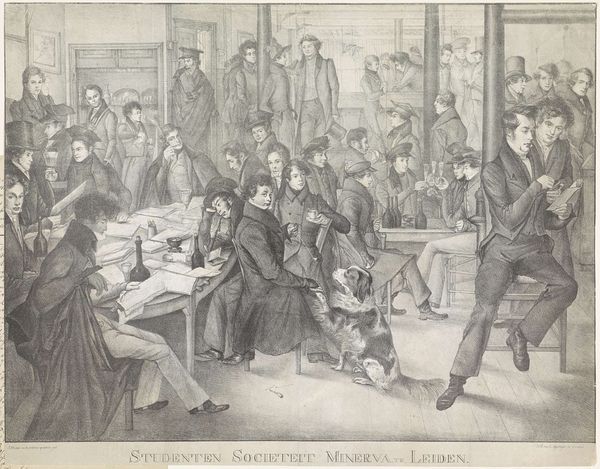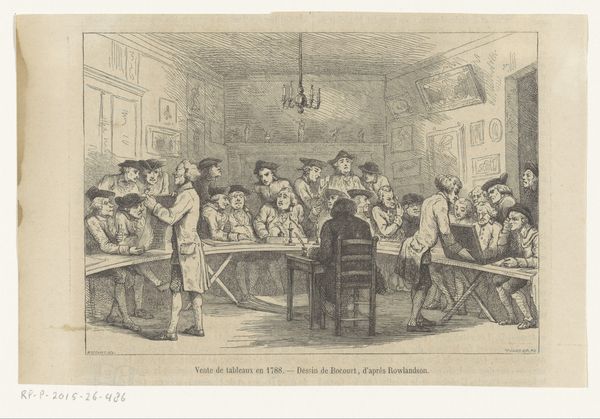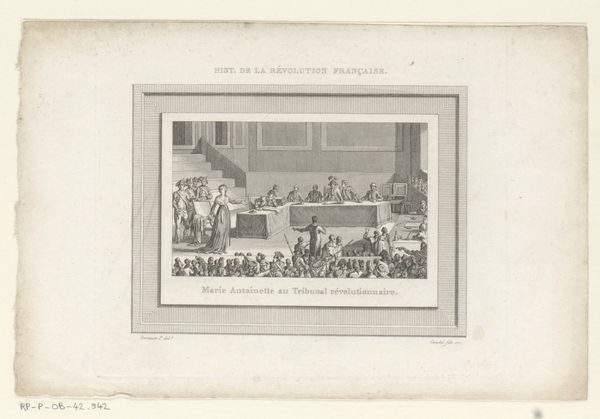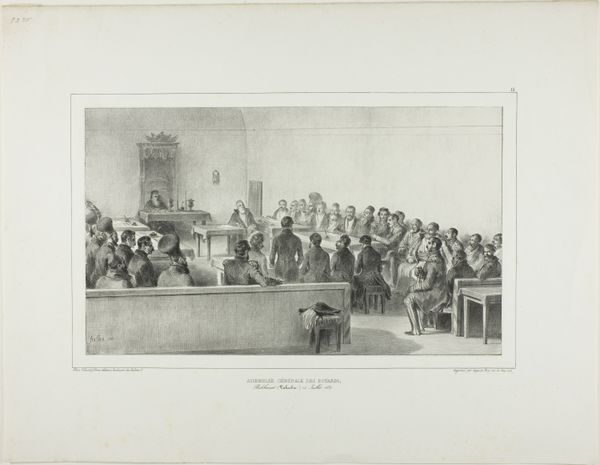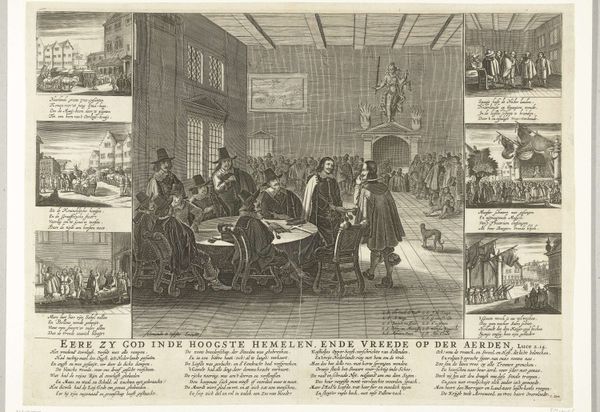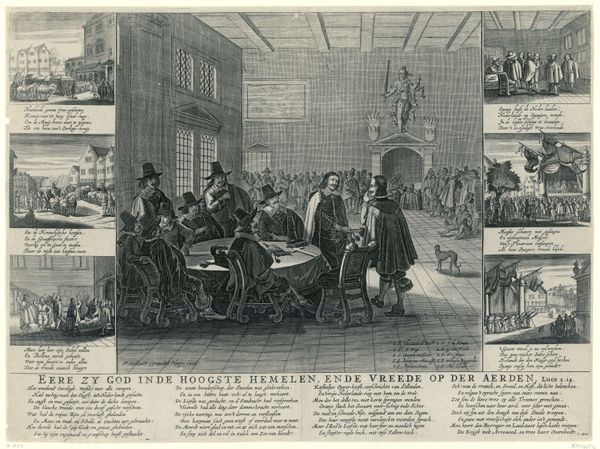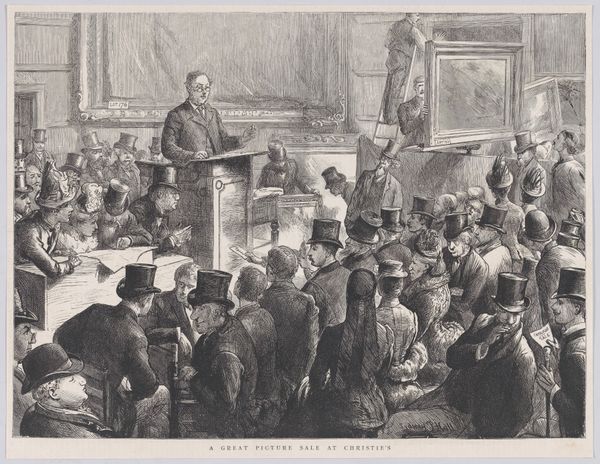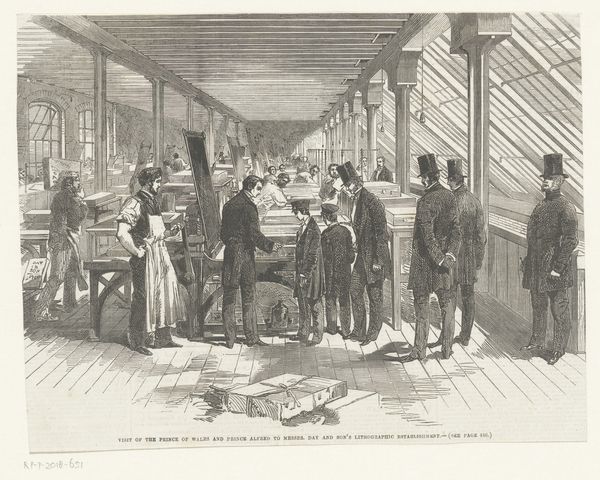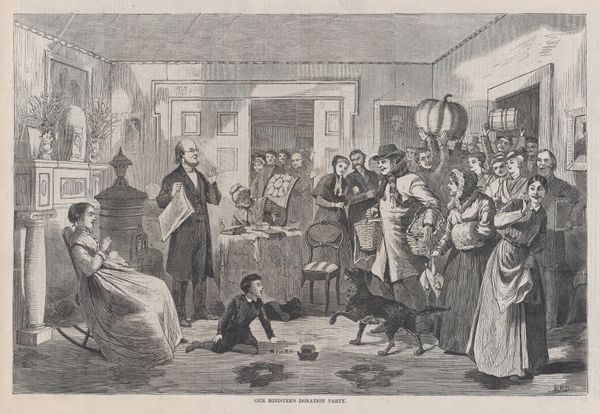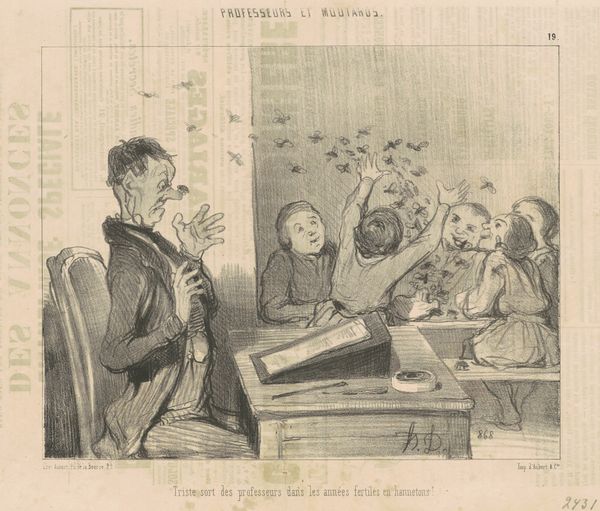
lithograph, print
#
portrait
#
lithograph
# print
#
group-portraits
#
romanticism
#
genre-painting
Dimensions: height 458 mm, width 610 mm
Copyright: Rijks Museum: Open Domain
Curator: Leendert Springer's "Studentensociëteit Minerva te Leiden," dating from around 1830 to 1835, presents a snapshot of student life in a Dutch academic society. Created as a lithograph print, it captures a group of young men in a moment of leisure. Editor: The composition immediately gives off a sense of contained energy. The monochrome palette lends a serious tone, while the sheer number of figures crammed into the scene suggests a bustling, almost claustrophobic atmosphere, right? Curator: Indeed. This print provides valuable insight into the social rituals and power structures of student societies in the 19th century. Notice the almost staged arrangement of the figures, each engaged in a different activity – reading, chatting, playing chess. Editor: I find it fascinating how this seemingly informal gathering actually reinforces the rigid social order of the time. Look at the expressions, or the subtle cues in attire! There's an undeniable air of exclusivity, wouldn't you say? What about the racial composition? I wonder what unspoken codes or entry requirements might have been enforced by the society, shaping its membership. Curator: Precisely! And beyond the individual interactions, the architecture of the room itself— the pillars, the bar—it speaks to a desire for a classical connection with learned elites, reflecting their ambitions and the social roles they likely aspired to occupy. Editor: Considering its status as a genre painting within the Romantic style, the emphasis seems to be more on depicting social identity than capturing purely emotional depth. It highlights the creation of a collective identity rooted in intellectual pursuits and privilege. Curator: I concur. It serves as both a record and a social construct—defining a specific brand of masculinity and belonging within a particular historical context. We see not just students but the budding figures of law, politics and civic power, already solidifying connections within these exclusive spaces. Editor: It is really striking when you consider the access that this society grants. The romanticized depiction subtly obfuscates underlying issues of privilege and social hierarchy, creating a particular public image, don’t you think? Curator: In conclusion, the artwork offers a critical lens through which we might see the role of such institutions and how they are implicated within society and historical power structures. Editor: Absolutely, this glimpse into student life unveils wider themes of class, gender, and the performative nature of social belonging during the early 19th century.
Comments
No comments
Be the first to comment and join the conversation on the ultimate creative platform.
